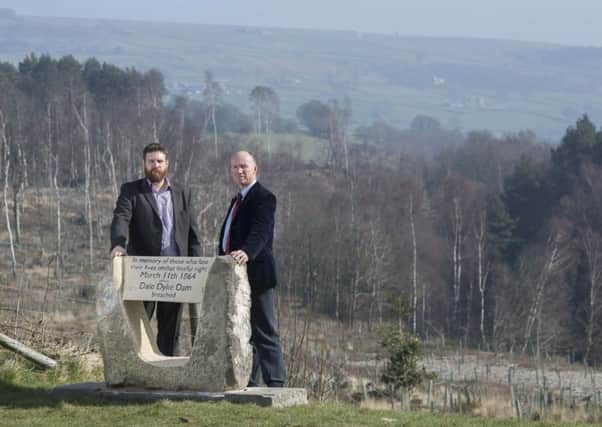Memorial for 1864 South Yorkshire flood victims


A crack in the wall of the newly-built dam led to its partial collapse close to midnight on 11 March 1864, allowing 650,000,000 gallons of water to spill out of the new Dale Dyke reservoir and into the rivers below.
The affects of the tragedy could be seen as far afield as Doncaster and Rotherham.
Advertisement
Hide AdAdvertisement
Hide AdThe incident is being commemorated with a new memorial stone, funded by Yorkshire Water and the British Dam Society and created by local artist Andrew Vickers
Newman Booth, reservoir specialist at Yorkshire Water, said: “We felt it was only right to honour the victims of this devastating flood with a new memorial stone.
“Reservoirs are such a familiar part of our landscape that it’s easy to forget that they hold many millions of gallons of water and, if not properly managed and maintained, can pose a significant risk to the communities which live below them.
“That’s why we have a dedicated team of engineers looking after our 137 Yorkshire reservoirs. We do the worrying about safety so that our customers don’t have to. We are also supervised by a series of highly-qualified independent engineers who have to approve all of our work to both maintain existing reservoirs and create new ones.
Advertisement
Hide AdAdvertisement
Hide Ad“We hope that the communities of the Don Valley and the families of the 270 victims think this is an appropriate way to mark the anniversary of this devastating event.”
Ian Hope, Chair of British Dam Society, said: “The events 150 years ago were extremely tragic. First and foremost our thoughts go out to the victims on that catastrophic day.
“Our country was a different place a century and a half ago, with no guarantee of safe drinking water and continual threat of disease such as cholera. Sheffield itself suffered a number of well documented cholera outbreaks. This led to the demand for safe drinking water and proper sanitation. In this emerging industrial age and drive to improve public health, Dale Dyke was one of a number of reservoirs constructed to provide a reliable safe supply of water.
“However, the original Dale Dyke dam failed on first filling, exposing inherent weaknesses. Our engineering forebears learnt a great deal from both this and other similar tragic Victorian dam failures, adopting a robustness of approach to the construction of later dams.
Advertisement
Hide AdAdvertisement
Hide Ad“Our confidence today in the significantly increased safety of our dams comes from both the continued vigilance employed by owners and supervision by properly trained and qualified engineers who also form the membership of the British Dam Society.”
The memorial stone is by the newer Dale Dike dam which was built further up the valley from the original and completed in 1875. It created a slightly smaller reservoir than the original. The shape of the stone mirrors the breach of the original dam and the positioning of the stone allows people to look through the notch to the Loxley Valley below and see the route the water would have taken on that fateful night.
Dale Dyke was one of a series of reservoirs built in the 1850s and 60s in the Bradfield area, about eight miles north-west of Sheffield, in response to the growing population.
When the dam burst the affects were seen as far afield as Doncaster and Rotherham. In addition to the massive loss of life, total or partial destruction occurred to 415 dwelling houses, 106 factories/shops, 64 other buildings and 20 bridges.